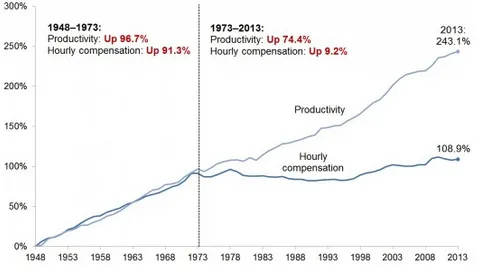N.C. 4th worst for having a dying middle class
USA Today ranked the top 10 states where the middle class is dying
North Carolina ranks 4th among states with a dying middle class, according to a recent report by USA Today, which used data from the U.S. Census Bureau and the Bureau of Labor Statistics to determine that middle incomes here fell almost 2 percent between 2010 and 2014.
North Carolina’s unemployment rate dropped 4.8 percentage points from 2010 to 6.1% in 2014, just below the national unemployment rate of 6.2% that year. Despite the improvement, however, income inequality has been getting worse in the state. The highest earning 20% of North Carolina households have an average income of more than $166,000, up 3.3% since 2010. Meanwhile, the income of a typical middle class North Carolina household fell by 1.8%, more than twice the comparable national income decline of 0.7%.
Union membership, which is often associated with middle class health, fell 1.3 percentage points to 1.9% in 2014, the lowest share in the country. Low union membership can often make it more difficult for workers to organize and advocate for themselves. North Carolina has resisted workers’ demands to raise the minimum wage above the federal minimum of $7.25 per hour, which many argue would help mitigate income inequality.
Unsurprisingly, three of the "top" five states - Georgia (2nd), North Carolina (4th), and Tennessee (5th) - are in the South.
Why is the middle class dying in these states?
Despite being essential to economic growth, middle class incomes have suffered from wage stagnation. According to the Economic Policy Institute, an economic and social policy think tank, one reason that middle class incomes have remained flat for decades is the divergence of productivity and wage growth. Just after World War II — a time many have called America’s golden age — productivity and wages both increased more than 90%. Since 1973, productivity has continued to climb, increasing 74.4%. Meanwhile, however, wages have increased by less than 10%. This means owners and investors, many of whom comprise the wealthiest 20% of households, have by and large reaped the benefits of the greater productivity. The workers, on the other hand, have not seen comparable wage increases.

Productivity vs. Compensation. Source
A big part of the reason productivity gains are no longer being passed along to workers in the form of higher wages is because far fewer have collective bargaining agreements today than forty years ago.Declining union membership may also have contributed to the suffering of the middle class. In 1979, 24.1% of American workers belonged to a union. Today, just 11.1% of Americans are unionized. The decline of union membership has largely mirrored the shrinking of middle class incomes.

The decline of unions mirrors the decline of the middle class. Source
Read the USA Today report, States where the middle class is dying.